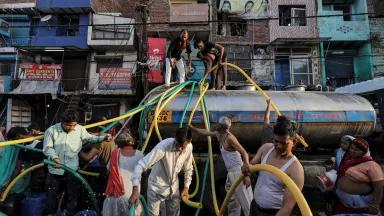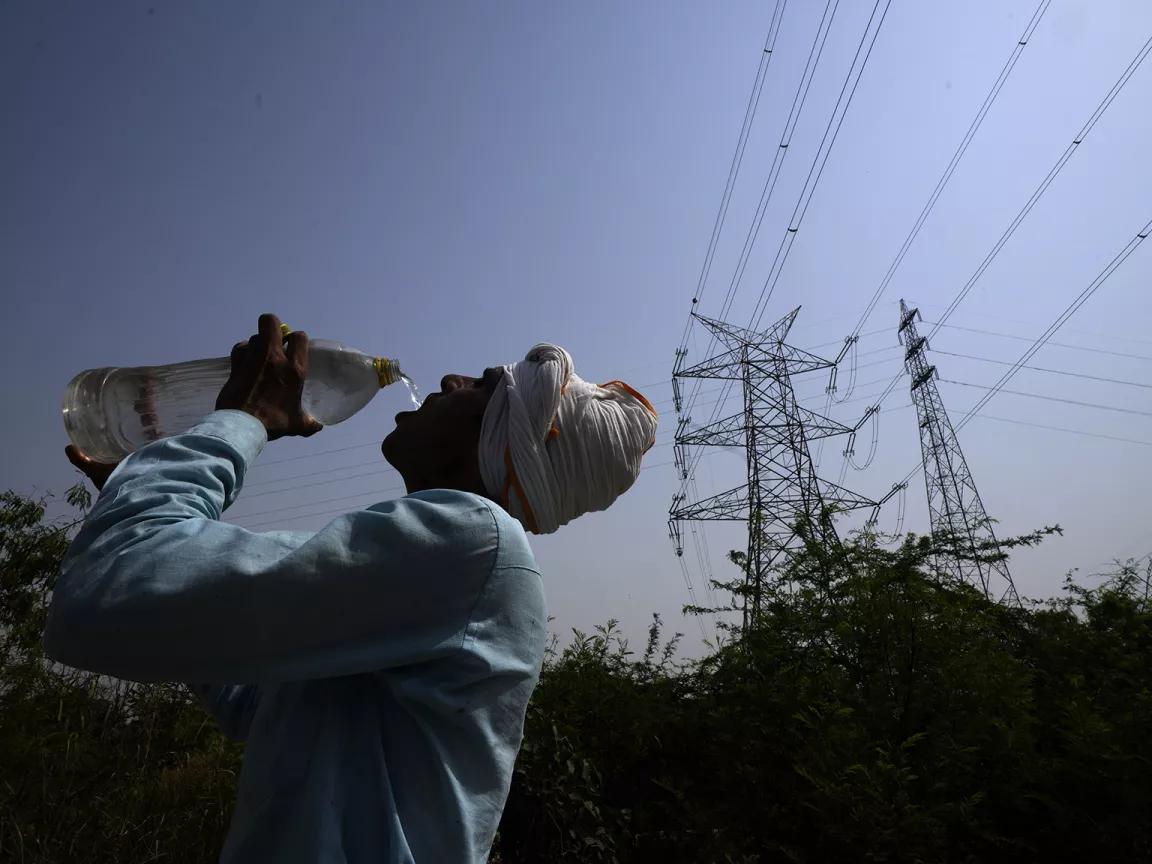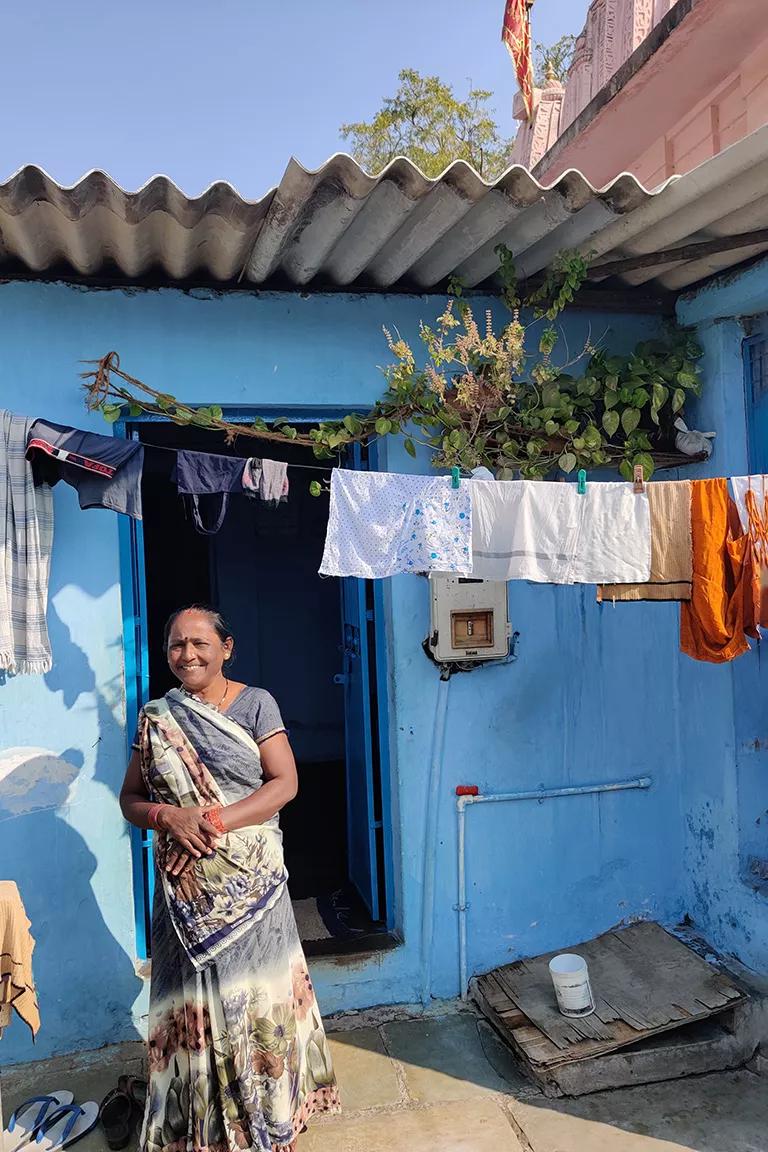A Climate Strategy for India Scales Up
With the formation of its affiliate in New Delhi, NRDC rises to meet the sustainability challenges of the world's fastest-growing economy.

People enjoy an evening breeze near the Arabian Sea in Mumbai.
Indranil Aditya/NurPhoto via AP Photo
Here’s a stat worth pondering: Nearly 40 percent of the buildings that will exist in India 20 years from now have yet to be built.
The thought of the world’s soon-to-be most populous country increasing its building stock so rapidly leads to the question: Can this be done sustainably? After all, as a general rule, the faster something goes, the harder it is to control. Just ask any experienced Formula One racer or novice jazz musician.
But ask Prima Madan of NRDC’s India team if all of this development can be done in a climate-friendly way, and she’s optimistic. “India has a unique opportunity to get things right, from the start,” she says. Before builders have even broken ground, she notes, they can commit to employing the most up-to-date energy efficiency technologies and techniques.
For example, passive cooling—the skillful use of shade, insulation, window placement, and other low-tech solutions—maximizes the potential of both architecture and materials to keep homes from absorbing and retaining heat. What’s more, architects, companies, and city planners can build sustainability into the entire supply chain of the construction process, from the initial procurement of raw materials to the final design touches. This can dramatically reduce the amount of emissions associated with a building’s construction from beginning to end (sometimes referred to as its embodied carbon footprint) and help development become an adaptive solution to climate change instead of just another contributor to it.

Jali stone screens, seen here at the Pearl Academy in Jaipur, India, help to provide shade and cooling inside buildings.
View Pictures/Universal Images Group via Getty Images
Supply and demand…and sustainability
In the fastest-growing major economy in the world, the building sector doesn’t present the only opportunity for sustainable development. Demand for energy is also skyrocketing. In fact, the International Energy Agency projects energy demand to grow faster in India than in any other country over the next 20 years. At the same time, India has set aggressive climate goals, including a commitment to generate 50 percent of its electricity from non–fossil fuel sources by 2030.
Given that India is the third-largest emitter of greenhouse gases (just after China and the United States), its actions to decarbonize are not only critical for achieving the worldwide goal of limiting average global temperature rise to 1.5 degrees Celsius above preindustrial levels but also for the welfare of the country’s 1.4 billion residents. The people of India are already bearing tremendous consequences from carbon pollution on their air quality and health and contending with the impacts of climate change on their homes, communities, and livelihoods.
One study conducted by India’s Council on Energy, Environment and Water concluded that 74 percent of India’s districts are highly susceptible to droughts, floods, cyclones, or a combination of the three. The analysis also found that within more than 45 percent of those districts, landscape or infrastructural changes have taken place that would exacerbate the damage caused by such weather events. Meanwhile, deadly heat waves that arrive every summer are getting worse, and in areas without a reliable grid, access to cooling can't be taken for granted.
From the ground up
In May of 2010, a heat wave brought temperatures as high as 116 degrees Fahrenheit to Ahmedabad, killing more than 4,400 people—roughly 1,300 more fatalities than would have been expected for that month in the city. NRDC began working with Indian officials and partners to develop comprehensive heat action plans in communities across the country. By 2013, Ahmedabad was the first city in South Asia to have its own such plan. Conceived and crafted with major input from the Indian Institute of Public Health–Gandhinagar, it has been administered for the past decade by the Ahmedabad Municipal Corporation, which issues heat alerts for residents whenever temperatures reach dangerous levels. Since then, more than 100 cities across 23 states have adopted similar plans that collectively help protect more than 700 million people.
In addition to increasing heat preparedness, NRDC’s work in India has included partnering with governments and organizations to grow the country’s renewable energy and clean transportation sectors, expand the adoption of energy-efficiency technologies, increase climate resiliency in communities, and implement strong climate policies at local and national levels. Earlier this year, we formed an affiliate in New Delhi, NRDC India Pvt. Ltd., led by Dipa Bagai, whose past public policy credentials include high-level positions at the World Bank and the United Nations Development Programme as well as 17 years with the Indian Administrative Service.

A group portrait of NRDC and NRDC India staff, including Dipa Bagai (back row, sixth from right) and Prima Madan (back row, fourth from right). NRDC President Manish Bapna (back row, center right) joined to celebrate the launch of the new NRDC India affiliate in New Delhi, in February 2023.
NRDC India
The key to implementing effective climate policy in a country as large as India, Madan says, is to allow cities to serve as laboratories. “We pilot innovative projects at the municipal level, where the benefits of our work can be clearly demonstrated,” she says. “Once we have strong proof of concept, we work with state partners and national government agencies to bring these projects to a larger scale.”
As one example of this from-the-ground-up approach, Madan cites the work that NRDC has been doing since 2017 on “cool roof” technology. Cool roofs employ highly reflective coatings or other materials to keep buildings from absorbing high amounts of solar energy, helping to lower temperatures inside of these buildings—sometimes by as much as 9 degrees Fahrenheit—at the same time that they help lower energy costs by cutting down on the need for air-conditioning. And they can be very cost-effective to install. Depending on the material used, costs can range from approximately 50 cents to $2 per square foot. Members of the India team worked with stakeholders in the cities of Hyderabad and Ahmedabad to create cool roofs. The Ahmedabad pilot, which covered 3,000 roofs with cooling materials, cost the city just $10,450.
The projects’ demonstrated success coupled with years of continued outreach ultimately led officials in the state of Telangana—which has a population of 35 million—to implement a policy that aims to place cool roofing atop buildings across 116 square miles of the state by 2028. The Telangana State Cool Roof Policy, Madan says, “is not just the first of its kind in India; it is the first of its kind globally.”
As it grows and builds itself up, India is in a unique position to show the world that rapid economic development and sustainability aren’t necessarily at odds with one another—they can, in fact, go hand in hand. The timing for NRDC’s new affiliate couldn’t be better, in Madan’s opinion. “Most of the work we’ve been doing so far in India has been on the cusp of scaling up,” she says. NRDC’s expanded presence there will not only help speed up this process but also send a reassuring signal to communities that “we are here to stay.”
This NRDC.org story is available for online republication by news media outlets or nonprofits under these conditions: The writer(s) must be credited with a byline; you must note prominently that the story was originally published by NRDC.org and link to the original; the story cannot be edited (beyond simple things such as grammar); you can’t resell the story in any form or grant republishing rights to other outlets; you can’t republish our material wholesale or automatically—you need to select stories individually; you can’t republish the photos or graphics on our site without specific permission; you should drop us a note to let us know when you’ve used one of our stories.







What Are the Solutions to Climate Change?
A Consumer Guide to the Inflation Reduction Act
How to Ditch the Biggest Fossil Fuel Offenders in Your Life